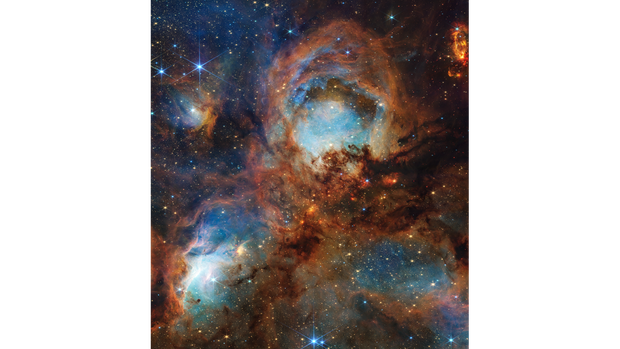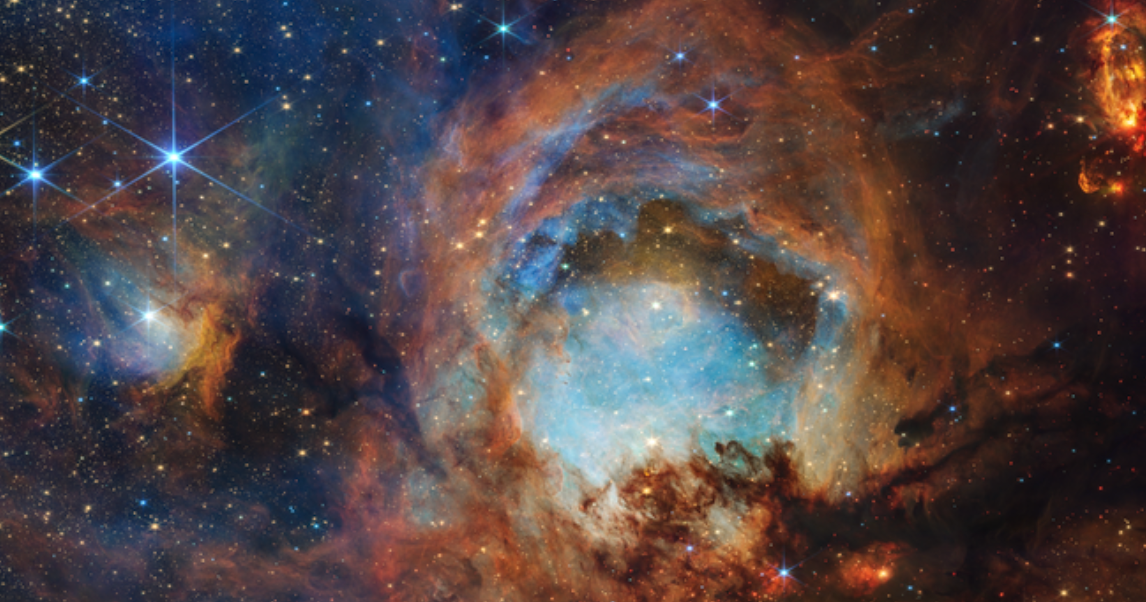Glimpse Inside a Velvet Pad: Webb Uncovers Stellar Toddlers in the Cat’s Paw Nebula
NASA’s James Webb Space Telescope has aimed its Near-Infrared Camera at a single, plush “toe-bean” tucked within the famed Cat’s Paw Nebula. The payoff is a portrait of chaos and creation: glittering infant stars sculpting their birth-clouds with fierce ultraviolet light and stellar winds.
The Giant Footprint 4,000 Light-Years Away
Carved into the darkness near the constellation Scorpius, the Cat’s Paw Nebula earned its nickname for a reason:
- Three rounded lobes look uncannily like a cat’s toe beans.
- A broader heel-like extension stretches along the southern edge.
- Intricate lanes of crimson and magenta glow from energized hydrogen gas.
Its true “address,” however, spans roughly 80 light-years across and sits 4,000 light-years from our own planet.
Peeling Back the Cosmic Dust
Webb’s infrared sight slices through thick veils of interstellar haze that would stop visible light dead in its tracks. In the chosen lobe, the telescope caught:
- Nascent suns blazing butterscotch-yellow, no more than a million years old.
- Intricate hollows etched by jets and radiation, revealing pockets of still-unseen protostars.
- Aquamarine wisps where polycyclic aromatic hydrocarbons shimmer like cosmic neon.
What Happens Next
Over the coming millennia, the youthful cluster will blow its dusty cradle apart, exposing fresh, open vistas of newly minted stars—proof that even a sleepy cat-print in the sky keeps busy raising its next generation of giants and dwarfs alike.

Webb’s “Paw-print”: A Fresh Portrait of a Stellar Nursery in Scorpius
Marking three Earth-years since its Christmas-morning launch, NASA’s James Webb Space Telescope has rolled out a dazzling souvenir—its sharpest-ever look at the Cat’s Paw Nebula.
A Palette of Creation and Chaos
- Electric-Blue Brilliance: These sapphires mark massive, fully formed stars flooding the region with ultraviolet light.
- Ruby-Bursts of Youth: Shimmering crimson knots pinpoint fresh cocoons of gas and dust where protostars are being born.
- Ice-Blue Dots: Blue-white pinpricks are unobscured suns whose radiation beams unfiltered into Webb’s mirrors.
- Chocolate Dust Filaments: At the “toe-bean” edge, dense brown tendrils hint at the next generation’s nursery, quietly readying itself for collapse.
The Transient Theatre of Star formation
This canvas of color is a brief flash in cosmic time. The same giants that light up the scene will soon disperse the clouds that birthed them, slamming shut the door on future stellar births.
More Than a Pretty Picture: Webb’s Three-Year Scorecard
Revolutionary Revelations
- Confirmed galaxies matured far earlier than models predicted.
- Captured the earliest stages of protoplanetary disks.
- Spotted near-Earth asteroids during routine calibration images.
“Webb keeps peeling back layers of the unexpected,” said Shawn Domagal-Goldman, acting director of the Astrophysics Division at NASA Headquarters. “Each new panorama raises new puzzles faster than we can solve the last.”
From proto-stars to primordial galaxies, the telescope continues to redefine astronomy’s playbook—one breathtaking paw print at a time.




